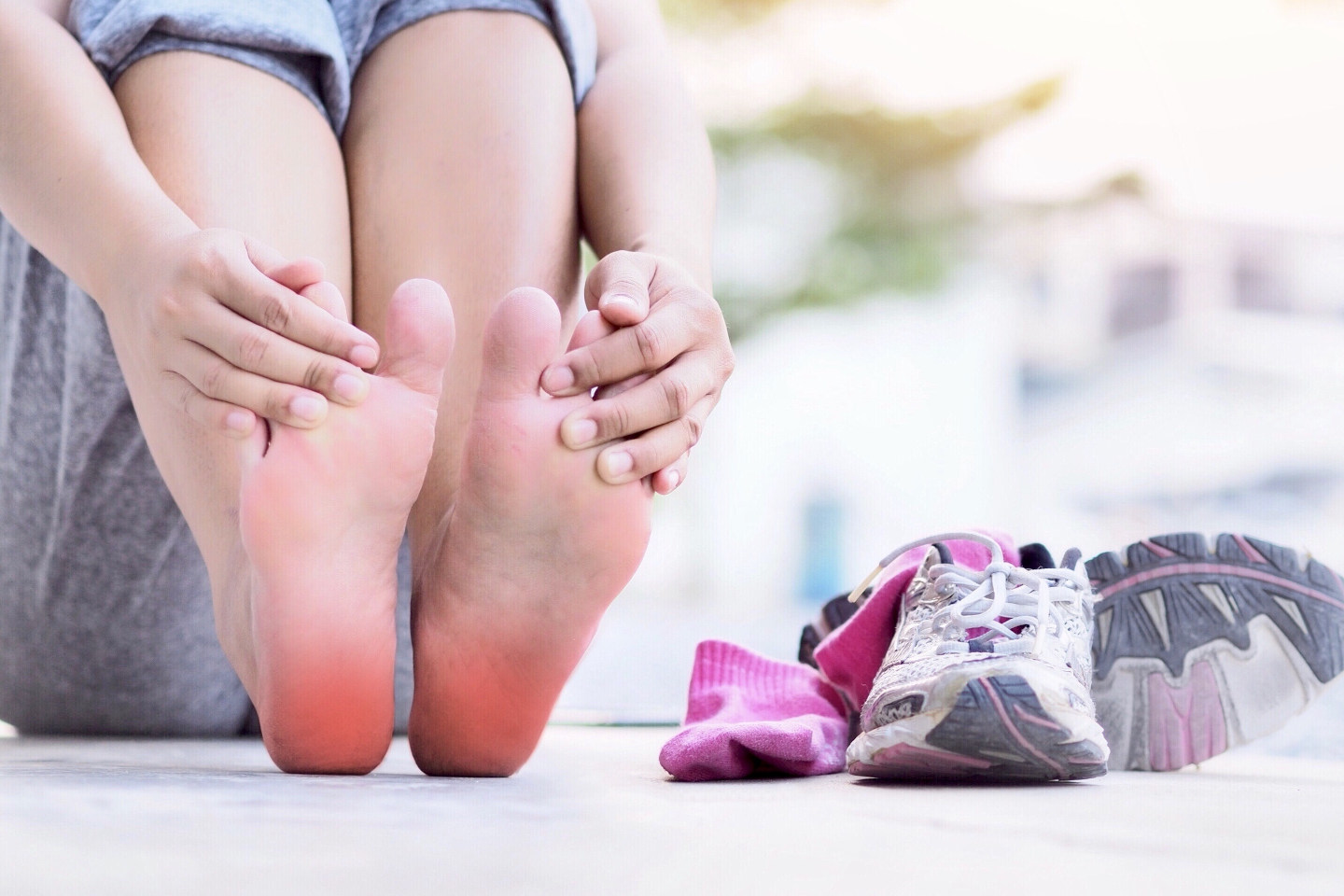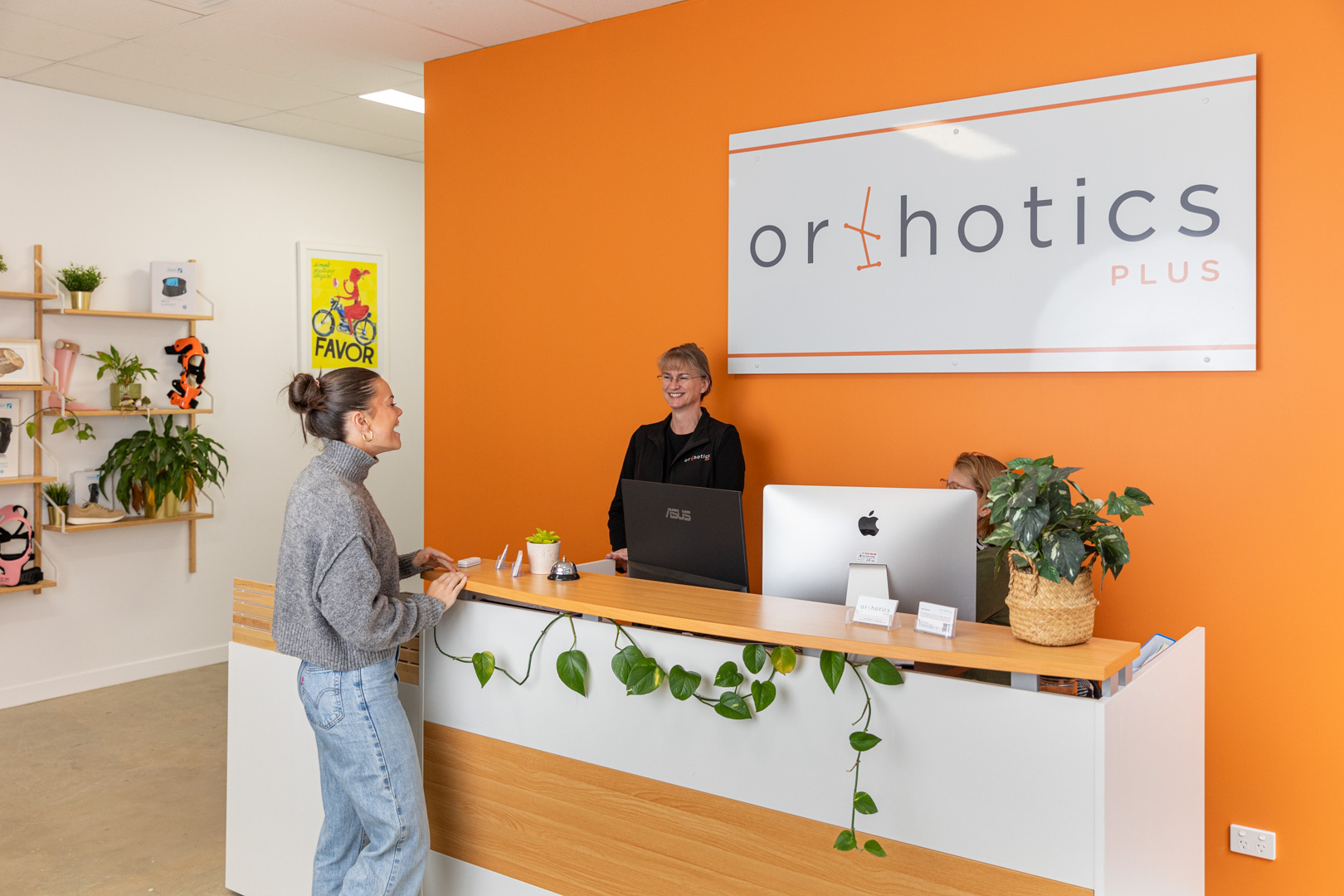Heel Pain
Many conditions can lead to heel pain, which makes it a prevalent symptom for the wonderful patients we see.
Although patients often experience heel pain in similar ways, our treatment plan will vary depending on the specific diagnosis. Our treatments usually incorporate supporting and cushioning the heel, altering biomechanics, prescribing stretching and strengthening regimes, giving footwear advice, whilst assessing and altering the patient’s activity level.
We frequently see both adults and children experiencing heel pain, and our Orthotists are experienced in treating heel pain regardless of the patient’s age or condition.

Heel Pain Anatomy & Common Conditions
There are two common areas in the heel that are associated with heel pain (the calcaneum, the large heel bone that contacts the ground) and the plantar fascia (which attaches to the calcaneum and runs along the sole of the foot).
The most common conditions that cause heel pain are plantar fasciitis in adults and Sever’s disease in children.
Other conditions such as calcaneal stress fractures and ‘fat pad atrophy’ can also contribute to heel pain, but those are far less common.

Assessment of Heel Pain at Orthotics Plus
The first step to managing heel pain is establishing a diagnosis.
Patients or GPs may attribute heel pain to plantar fasciitis, which may only serve as a general (yet somewhat inaccurate) diagnosis. While plantar fasciitis is prevalent, we always want to make sure the diagnosis is correct. These diagnoses can also vary depending on the patient’s age.
From there, we’ll ask the patient about their pain timeline. This includes asking about
- Pain differences during different times of the day
- Whether or not prolonged standing impacts pain
- Whether the pain is onset at rest or during weight-bearing
- Duration of pain
Then we move to a biomechanical assessment, where we consider:
- The foot posture
- High arching vs flat feet
- Type of footwear being used
- Daily activities
- Walking pattern
This detail is relevant in order to best assist with diagnosis and treatment.

![]()
How We Treat Heel pain
Medial Arch Supports
We commonly incorporate medial arch support into custom foot orthotics.
There are three arches in the foot: the medial arch, the lateral arch, and the transverse arch.
The medial arch runs along the inside of the bottom of the foot. When someone has flat feet, we describe this as ‘the medial arch is collapsed’. This is the most common foot deformity that people present with.
With patients experiencing heel pain, we want to ensure that we provide contact through the medial arch to correct foot posture and offload weight from the heel area. If we can shift the weight of the heel to the medial arch area or the midfoot, then we can often achieve a reduction in pain.
Silicon Heel Cushions
Added heel cushioning is also a common modification. To add the cushioning, we would make a cut-out within the orthotic and fill it with a soft cushion material underneath the heel.
Depending on the diagnosis, custom foot Orthotics are often preferred to silicone heel cushions, which sit in the heel and do not offer any kind of medial arch involvement.
Silicone heel cushions are good at cushioning but not good at offloading and correcting foot posture. They are however, a low cost, low risk option and usually result in instant pain relief.
Footwear
Reviewing footwear is a part of all treatments.
We recommend shoes that offer more cushioning, stability, and control of the heel/ankle and complement your natural biomechanics.
Orthotics Plus can help you select footwear for your circumstances, such as workboots.
Heel Fractures
For calcaneal stress fractures or normal calcaneal fractures, for example, we may recommend a Moon Boot.
We stock moon boots on-premises and will fit them the day of the appointment. Our services include the management of fracture rehabilitation.

![]()

Book a Heel Pain Assessment Today
Take the first step to fixing your heel pain and visit our qualified Orthotists.
- Please contact our reception who can inform you of pricing prior to booking
- Our senior staff are university-qualified with a minimum of 10 years experience
- We have multiple clinics throughout Melbourne
- We provide a patient centred approach
Please use our clinic locations page to get in touch.

FAQ
We typically find that the footwear that people wear for jobs that involve a lot of standing are completely inappropriate, so we want to make sure we correct that first.
We also encourage the stretching of calf muscles and plantar fascia throughout the day while standing at work.
When silicone heel cushions or custom foot Orthotics are trialled, many patients experience a positive change working long hours on their feet. It may be in your best interests to reduce the length of time you are on your feet per day during the early stages of treatment if possible.
Scans are available that can provide detail on your foot condition, but the information is not necessarily related to your risk of developing heel pain or the treatment of the pain.
While these scans can provide detailed measurements, they generally do not make a difference when it comes to selecting a treatment.
At Orthotics Plus, our team is experienced in diagnosing conditions based on patient assessment and other cues such as your biomechanics, wear patterns on shoes and callousing of your foot.
We typically aim to achieve complete recovery within four to six weeks.
For plantar fasciitis diagnoses, that means complete recovery from pain and discomfort.
Of course, this timeline will vary depending on the diagnosis. For fractures and more serious conditions causing heel pain, we’ll expect a different timeline but will always review after 2-3 weeks to check on recovery progress.
Yes, treatment order is often dependent on the patient’s diagnosis.
For example, if someone has normal biomechanics but has a plantar fasciitis diagnosis with significant tenderness under the heel, we’d often recommend starting with silicone heel cushions. They’re a lot more cost-effective and easier to implement than orthotics.
If the silicone heel cushions do not provide noticeable improvement, then we may need to look at custom-made orthotics that include medial arch support.
Usually, we take a “less is more” approach at the onset while taking into consideration all the other items we discussed in our assessment with the patient.